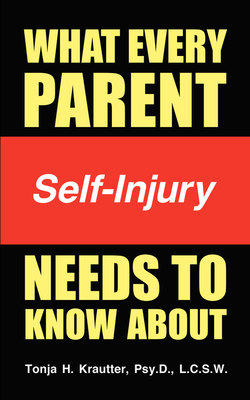Читать книгу What Every Parent Needs to Know About Self-Injury - Tonja Krautter - Страница 24
На сайте Литреса книга снята с продажи.
Finding Motivation
ОглавлениеOnce the problem is acknowledged, the next step is to find the motivation to stop. This may not be easy either since self-harm serves a purpose. First, the teen needs to understand why she is doing it and then find alternative ways to fulfill the same need. For example, if she self-injures to reduce stress, then she needs to think about healthier ways to relieve tension. The purpose of treatment is to eliminate the emotional distress the person is feeling. The possibility of finding some relief from these painful feelings can be a strong incentive to reach out for help.
This said, parents should prepare for the fact that many teens resist treatment out of fear that they will lose their coping mechanism. They are scared and unwilling to give up the one behavior that, in their mind, helps them deal with their problems. Therefore, it is important to assure them that during treatment, alternative behaviors will be explored to help relieve their distress. In addition, the unproductive thoughts that lead to the distressing emotions will be identified and challenged. The result should be an overall reduction in emotional distress, along with learning healthier, more functional coping mechanisms that can be utilized in time of need.
Seeking treatment as early as possible is vital. Getting help early leads to higher rates of success. The good news is that this is a behavior that can be stopped with help from a trained professional. Moreover, that help might ultimately change your teen’s life in more positive ways than either of you might imagine.
